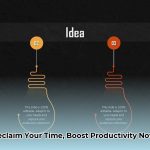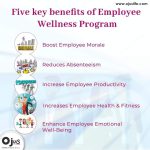Nursing is demanding, often leaving nurses feeling swamped and constantly racing against the clock. This guide offers actionable strategies to enhance patient care while prioritizing your well-being. Explore techniques for prioritization, delegation, and leveraging technology to create a sustainable workflow. For even more tips, check out these additional time management tips.
Effective Strategies for Time Management and Increased Productivity
Effective time management in nursing is about optimizing your workflow to reduce stress and improve patient outcomes. Working smarter allows you to provide excellent patient care and take care of yourself. This guide provides practical strategies to help you reclaim your time and reduce stress.
Mastering Prioritization: Triage Techniques for Nursing
Think of your workday like a busy emergency room, where you wouldn’t treat a minor cut before a life-threatening injury. Prioritization is key.
- Identify Urgent Needs: Focus on immediate medical needs, such as sudden changes in a patient’s condition or urgent medication requirements. Addressing these first sets the stage for a controlled workflow.
- Effective Nurse Patient Prioritization: Delegate tasks to appropriate members of your team, like CNAs and LPNs, based on their expertise. Ensure tasks align with their qualifications, maintaining responsibility for patient outcomes.
- Strategic Scheduling: Once urgent tasks are handled, schedule the remaining items. Utilizing a planner, calendar, or to-do list can prevent less critical tasks from dominating your schedule.
Delegation Strategies: Empowering Your Nursing Team
Effective delegation builds a strong, collaborative team. By recognizing team members’ strengths and matching them with suitable tasks, you save time and foster a supportive work environment. While delegating, remember that you remain accountable for overall patient care and outcomes.
Technology Utilization: Maximizing Efficiency in Healthcare
Technology can transform your workflow. Electronic health records (EHRs) offer quick access to patient data, saving time otherwise spent searching through paper charts. Automated medication dispensing systems reduce errors and streamline medication administration. Mobile devices facilitate instant communication and resource access. Familiarize yourself with available technology to optimize your daily routine.
Single-Tasking: Enhancing Focus and Reducing Errors
Contrary to popular belief, multitasking is less efficient. Our brains work best focusing on one task at a time, leading to fewer errors and higher quality work. Switching to a single-tasking approach can significantly increase productivity and reduce stress. Focus on completing one task fully before moving on to the next.
Self-Care: Essential for Sustainable Performance
Self-care is not a luxury but a necessity. Burnout poses a real threat in healthcare, impacting both your well-being and patient care quality. Schedule regular breaks, practice mindfulness (like deep breathing), and incorporate physical activity to maintain energy and prevent burnout, contributing to sustainable productivity.
Adapting Time-Saving Strategies: Personalizing for Optimal Results
The ideal time management strategy is not one-size-fits-all. Adjust your approach based on your specialty, patient population, and work environment. Experiment with different methods to find what suits your individual needs and preferences, enhancing efficiency and well-being.
Implementing Long-Term Strategies: Building a Sustainable System
Time management is an ongoing process. Advocate for better nurse-to-patient ratios and propose workflow improvements in your unit. Suggest changes to charting procedures, streamline paperwork, or promote technology upgrades. These changes benefit you and improve the quality of care on your unit. Support new initiatives in your facility by actively participating in process improvement committees and offering insights from your daily experiences.
Actionable Steps for Immediate Improvement
| Strategy | Short-Term Action | Long-Term Goal |
|---|---|---|
| Prioritization | Use ABCs (Airway, Breathing, Circulation) and patient acuity to prioritize tasks. | Develop a personalized prioritization system based on patient needs and unit demands. |
| Delegation | Assign non-complex tasks to team members based on their skill set. | Improve delegation skills through formal training or mentorship, focusing on clear communication. |
| Technology Integration | Explore and utilize available technology tools within your healthcare setting. | Become proficient in all relevant technology solutions, seeking continuous learning opportunities. |
| Single-Tasking | Focus on one task at a time, minimizing interruptions whenever possible. | Cultivate habits that support single-tasking, such as setting boundaries and minimizing distractions. |
| Self-Care | Schedule short breaks and incorporate mindfulness techniques throughout the day. | Establish a sustainable self-care routine that promotes physical and mental well-being. |
Mastering time management in nursing is a journey, not a destination. Continuously refine your approach, learn from experiences, and prioritize your well-being to benefit both your personal and professional life. Engage in peer mentoring to share tips and tricks with colleagues, creating a supportive environment for ongoing improvement.
How to Boost Productivity in Intensive Care Unit Settings
Key Takeaways:
- Efficient time management directly enhances patient care and nurse well-being within a demanding ICU context.
- Prioritization, delegation, and tech integration are key to streamlined workflows.
- Self-care routines are vital to sustaining output and avoiding burnout.
- Ongoing assessment and adjustment of time management practices are essential for sustained success.
Ruthless Prioritization: The Triage Imperative
In the ICU, time is critical. Effective prioritization relies heavily on addressing the most critical needs first (unstable vitals) and postponing less urgent matters (charting). Employ tools like ABC prioritization (Airway, Breathing, Circulation) to guide decision-making, and confidently delegate secondary tasks. Dynamic reassessment of priorities is crucial in the fast-paced ICU setting. Nurses who use time management strategies can reduce errors by up to 15%, according to the American Nurses Association.
Empowering Delegation: Teamwork in Action
Effective delegation requires strategic teamwork. Identify tasks suitable for delegation, such as obtaining supplies or inputting basic patient data. Verify that the delegate has the requisite skills and offer clear instructions, following up to ensure proper execution. Build trust in your team’s capabilities as a crucial support system. Develop a skills matrix for your team to easily identify who is best suited for specific tasks.
Tech Innovation: Maximizing Technology’s Impact
Leverage technology to drastically enhance efficiency. Master the electronic health record (EHR), utilizing time-saving shortcuts and templates to reduce charting time. Use computerized medication dispensing systems effectively and explore apps designed for task management and scheduling. Technology supplements critical thinking and serves as a powerful tool to streamline processes. Participate in training sessions to stay updated on the latest technological advancements in healthcare.
Time Blocking: Structuring Your Day
Time blocking can help maximize focus by segmenting the day into specific task allocations. Allocate specific time slots for different tasks, while being realistic and accounting for interruptions. Consider batching similar activities (e.g., making all phone calls at once). This structured method creates manageable chunks of your day. Use visual aids, such as color-coded schedules, to quickly identify priority tasks.
Self-Care: Prioritizing Personal Well-Being
Given the high-pressure work conditions, burnout is a genuine threat. Prioritizing self-care is crucial to long-term success, requiring scheduled breaks and adequate sleep. Make sure you eat nutritious meals and stay hydrated while engaging in activities that promote relaxation and stress reduction. A refreshed nurse is a more efficient nurse. Utilize employee wellness programs offered by your facility to access resources for managing stress and improving overall well-being.
Continuous Improvement: Reflecting and Adapting
Time management requires ongoing refinement. Regularly evaluate work practices to identify areas for enhancement. Experiment with various strategies and solicit feedback from colleagues. Continuous adjustment is essential for optimizing efficiency. Regular reflection on time-management techniques can improve efficiency on a nursing unit by up to 20%, potentially reducing the amount of overtime required and increasing staff satisfaction, according to a study published in the Journal of Nursing Management.
Optimizing Efficiency in Emergency Room Nursing: Strategies That Work
Key Takeaways:
- Specialized time management training greatly improves nurse efficiency and triage capabilities within the ER.
- Primary barriers include excessive documentation, interruptions, poor communication, and deficient planning.
- Improved time management strategies encompass effective prioritization, delegation, technology use, and self-care.
- Adopting these strategies leads to a streamlined workflow, reducing stress and boosting patient care.
Mastering Prioritization: Triage Skills
Emergency Rooms (ERs) can be chaotic, with nurses managing multiple high-priority patients simultaneously. To succeed, embrace prioritization techniques. Employ methods like the ABC method (Airway, Breathing, Circulation) or the Eisenhower Matrix (Urgent/Important). Decide what actions must be taken immediately versus what can wait. Learning to decline non-essential tasks is essential for improving efficiency. A study in the Journal of Emergency Nursing found that nurses using structured prioritization techniques reported a 25% decrease in perceived workload.
The Art of Delegation: Teamwork in the ER
Nurses cannot be expected to perform every task, so delegate thoughtfully. Trust your team and give your colleagues greater responsibilities to free yourself for high-priority patient care. Provide clear instructions with deadlines and offer regular check-ins without micromanaging. Ensure all members of the team work together effectively by promoting open communication. Implement a system for easy task assignment and tracking to ensure accountability and prevent duplication of effort.
Technology Integration: A Modern Approach
Technological tools are pivotal. Electronic health records (EHRs) are vital if used efficiently. Learn keyboard shortcuts and master the charting system. Maximize the computerized physician order entry (CPOE) system and explore specialized apps to streamline workflows. Implement standardized templates and pre-populated fields in the EHR to
- Corporate Wellness Programs Cost Factors Impacting Your Company Budget - December 18, 2025
- Unpacking the Cost of Wellness Programs and Their Real Value - December 17, 2025
- How Much Do Wellness Programs Cost Businesses To Offer? - December 16, 2025
















